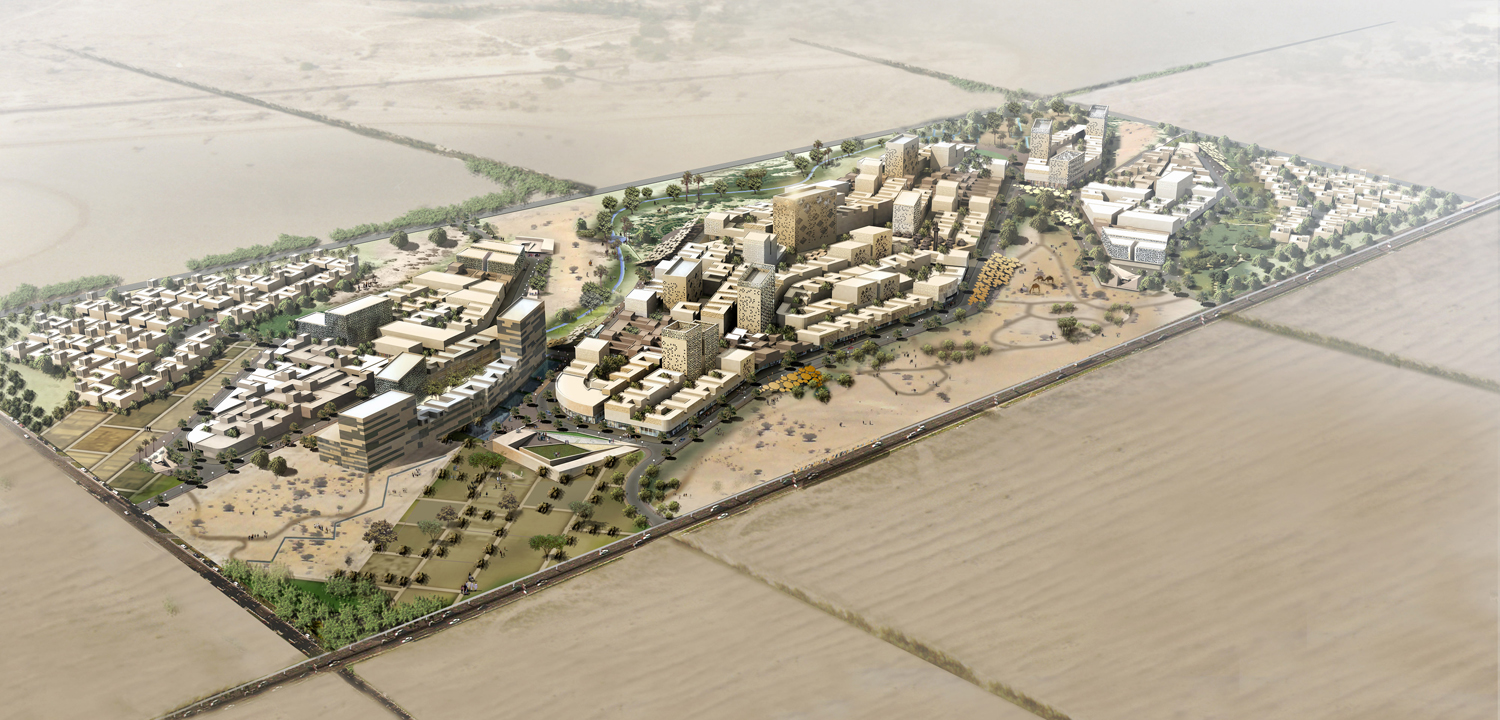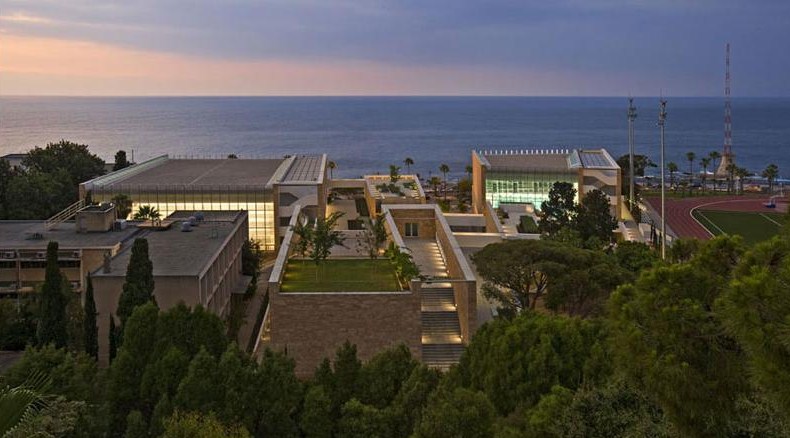|
|

Karim Elgendy
In celebrating this year’s World Green Building Week, Carboun has released a visual guide to energy use in buildings with the goal of explaining the overall state of energy use in the region and the significance of buildings as a major sector in energy consumption. It also aims to comparatively explain the nuances of the major trends of energy use in buildings as a baseline analysis for further research. The visual guide, which was researched and designed by Karim Elgendy with additional contributions from a small research team, was based on raw data obtained from the International Energy Agency and the World Bank. Copyrights for all infographics are reserved for Carboun. No reproduction or republishing of any infographic or part thereof is permitted without prior written consent from the author.
Continue reading A Visual Guide to Energy Use in Buildings in the Middle East
Karim Elgendy
The notions of sustainable design and energy efficiency first entered global consciousness following the energy shortages of the 1970s and 1980s. Influenced by ideas of energy independence, many designers in Europe and North America sought ideas and strategies that could help create energy-efficient buildings and cities. As they searched for design solutions, some researched the environmentally responsive elements of traditional architecture, while others developed new solutions that employ modern technologies and high performance materials.
As the energy crisis subsided, the building industry in North America returned to business as usual, allowing its European counterpart – which emphasized technological solutions – to take a lead. But with the revival of global interest in sustainability – this time driven by both environmental and energy concerns – the dormant dialogue between the two approaches to sustainable design returned to play a role in shaping the global sustainability agenda. Oscillating between advocates of passive design and proponents of technological solutions, this dialogue continues to enrich the discourse on the future of sustainable design and development
 National Commercial Bank in Jeddah (left). consists of a triangular 27-storey office tower juxtaposed with a six-storey, 400-car circular garage. The verticality of the bank tower is interrupted by three triangular courtyards ‘chiseled’ into the building's facade. The office windows are oriented towards these courtyards with an inward orientation typical of Islamic traditional design. This provides the interiors with daylight but prevents them from overheating. Copyrights: Wolgfang Hoyt/Esto. Shaded pathways within Masdar Institute for Science and Technology (right) Copyrights: Nigel Young Continue reading A Review of Sustainable Design in the Middle East
Wissam Yassine and Karim Elgendy
During the 1990s and the early 2000s, the UAE, and the city of Dubai in particular, witnessed a rapid rate of growth in its built environment driven by a real estate bubble. In the span of a few years the city’s unprecedented rate of growth, which was driven by both demand and speculation, completely transformed the city. But such growth came at a price. Driven by their need for quick returns, developers cared little beyond delivering a building on time and on schedule. Speed of construction often came at the expense of quality, and issues of performance and energy use played almost no role in the design and construction processes. Common disregard of performance was also fueled by the fact that most buildings were commissioned for developers – rather than owner/occupier clients – since their focus lied solely on reducing initial capital expenditures without considering operating costs that are typically borne by tenants.
 Figure 1. Photo of the Masdar Institute Courtyard showing the wind tower, and the layered facades of residential units. Copyrights: Nigel Young/ Foster+Partners These commercial forces, coupled with relatively cheap electricity across the UAE, and a lack of demanding building regulations have paved the way to the development of unsustainable design practices over the last decade. A typical office building in the UAE today is a predominantly glazed high rise tower. Basic design decisions such as orientation, massing, and envelope design are usually made without much regard to their impacts on the buildings’ energy performance, and passive cooling strategies are rarely considered.
Continue reading Passive Cooling: Responding to Electricity Demand in the UAE
Karim Elgendy
In the western context, notions of sustainable development often refer to the need to adjust existing economic models in order to maintain better balances between economic growth and social needs, while protecting local ecologies and reducing the negative impact of growth on the global environment.
In the developing world, however, sustainable development takes on a rather different meaning. With the agendas of developing nations focused on addressing basic developmental challenges such as economic growth, water scarcity, food security, and health, other environmental and social aspects are considered secondary at best and for the most part a luxury that a developing nation cannot afford.

The Environment and the Middle East – Pathways to Sustainability – Volume 1.
In the absence of functioning economic models in the developing world, sustainable development here is not about adjustments to maintain balances. Instead, it is about using this economical tabula rasa to build the foundations of a new economic model in which sustainability and the environment are integral. One of these economical foundations is the built environment.
The built environment of our cities plays a major role in shaping the way we live and work, and given its relatively long lifespan its impact is long lasting. Our buildings determine how much energy we use to maintain thermal comfort while our infrastructures determine how much energy we need for transportation. It is estimated that 40% of carbon emissions worldwide is produced from the occupation of buildings with at least a portion of transportation’s 20% share being a consequence of the way our cities are planned.
Our built environment also influences our impact on the local environment as well as our collective health and wellbeing. Thus, as the cities of the developing world continue to grow, they continue to make decisions about the direction their development takes.
In the Middle East, the role of the built environment is becoming more pronounced as the region continues to experience rapid population increases and urbanization. Increased urban densities together with the rise of consumerism, have not only led to an increase in environmental degradation locally, but they have also meant that the region’s traditionally low energy use — and consequently carbon emissions– are set to rise and to play a larger role in global climate change.
But embracing sustainable development in the Middle East faces many challenges which prevent it from becoming part of the region’s development framework and its building industry practices.
Continue reading Sustainable Development and the Built Environment in the Middle East: Challenges and Opportunities
Karim Elgendy
Throughout the last three decades, the city of Dubai has not been known for its emphasis on sustainability as guiding principles for its development. Not only did it adopt an unnatural rate of growth by middle eastern and global standards, it has also long disregarded the environmental and social consequences of its rapid urbanization. Dubai’s growth relied on -and was economically fueled by- a development model which imported inappropriate and inefficient building forms and planted them in its extreme climate. The result was a 1,500 square miles city (3,885 square kilometers) with isolated island buildings that are not only divorced from their environments, but which also require a great amount of fossil fuel energy to remain habitable.
 Image 1. Aerial View of Xeritown showing massing and landscaping. Copyrights: X-Architects and SMAQ The city of Dubai also has one of the highest carbon footprints per capita in the world, and even though this footprint is partially a result of energy intensive water desalination processes on which the city relies for its potable water, Dubai’s carbon footprint remains higher than that of other gulf cities including Saudi cities which also rely greatly on desalination.
In many ways, it is fair to argue that the Dubai’s model of development has been, in essence, the antithesis of sustainable development over the last three decades. In other words, Dubai has come to represent the climax of an obsolete development model in which humans attempted to subjugate their environment rather than coexist with it.
In contrast to this un-sustainable development pattern, Dubai’s neighboring city of Abu Dhabi has long adopted a measured and less extravagant development model. Over the same three decades, Abu Dhabi’s development model was generally characterized with a more sustainable pace of development. In the last few years, Abu Dhabi has been attempting to champion sustainable development in the Middle East by establishing a sustainability oriented framework for its development over the next 20 years, and by establishing the Masdar initiative which includes the world’s most progressive sustainable city project at its outskirts with ambitious zero-energy and zero-waste targets.
Continue reading Dubai Experiments with Sustainable Development
Karim Elgendy
In 2009, the American University in Beirut’s new student center was recognized as one of the American Institute of Architects’ Top Ten Green Buildings, the most prestigious profesional award for sustainability in the United States and one that is rarely awarded to international projects in the Middle East. The new student center is situated within the 73-acre campus of the American University in Beirut (AUB) and is named after Charles Hostler, the former US Ambassador and an AUB Alum. The student center is sited at the foot of a steep hill overlooking the Mediterranean sea and extends down to the Beirut Corniche, the capital’s grand waterfront boulevard (Image 1). The $30 million project was designed by the Minneapolis based VJAA together with the Lebanon based Samir Khairallah & Partners. The Stuttgart based Transsolar and the San Francisco based Hargreaves were part of the design team as environmental consultants, and Landscape designers, respectively.
 Image 1. View of Charles Hostler Student Center as seen from the Hill above. Copyrights: Paul Crosby Continue reading The American University in Beirut Combines Innovation and Traditional design
Karim Elgendy
In late 2008 the French President Francois Sarkozy inaugurated a new French school in Damascus, Syria. The French school, known as Lycée Charles de Gaulle, follows the french educational system and is accreddited by the French ministry of education. The school was designed by the French architects Ateliers Lion together with the German environmental engineering firm, Transsolar.
 Image 1. Night view of school central courtyard showing the solar chimneys. Copyrights: Adria Goula Sarda, Ateliers Lion The brief for the design team was to to develop a campus for the school with a capacity for 900 students ranging from kindergarten to high school. The design team was also tasked to develop a campus that embodies sustainability by using low-technology solutions for ventilation and conditioning of the school spaces, while maintaining the thermal comfort levels required for students in an educational environment.
Continue reading A Damascus School Revives Traditional Cooling Techniques
|
|







